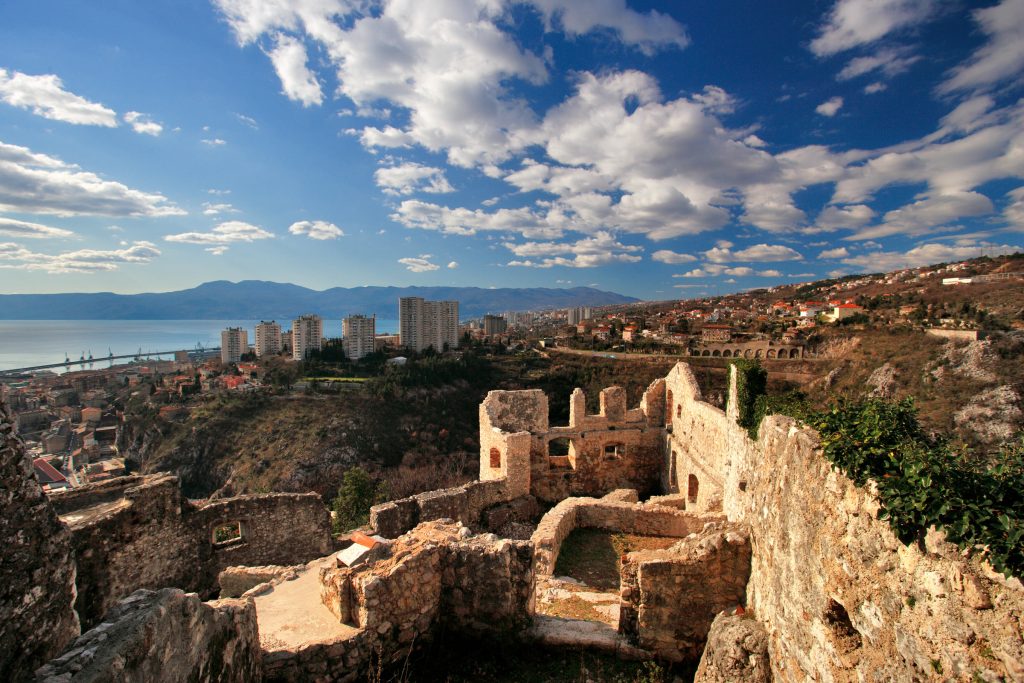It is well known why Croatia is one of the countries where HBO producers set their sights on adapting the acclaimed and popular Game of Thrones novel. Although Croatia is widely known for its Illyrian and Roman heritage thanks to its palaces and amphitheater, many of its castles and fortresses help to display a more medieval side of the country.
For those who have a particular interest in the feudal and medieval history of Croatia, here we review some of the main Croatian castles, fortresses, and citadels that are worth visiting.
Pula Castle
The Pula Castle is a star-shaped castle with four bastions that was built in 1630 to protect the city and its harbor because of its great significance in maritime trade in the North Adriatic. The Venetians commissioned the building of the Castle to the French military architect Antoine de Ville. This was most probably the site of an earlier fortress dating from the pre-Roman and Roman periods. Today the Castle houses the Historical Museum of Istria.
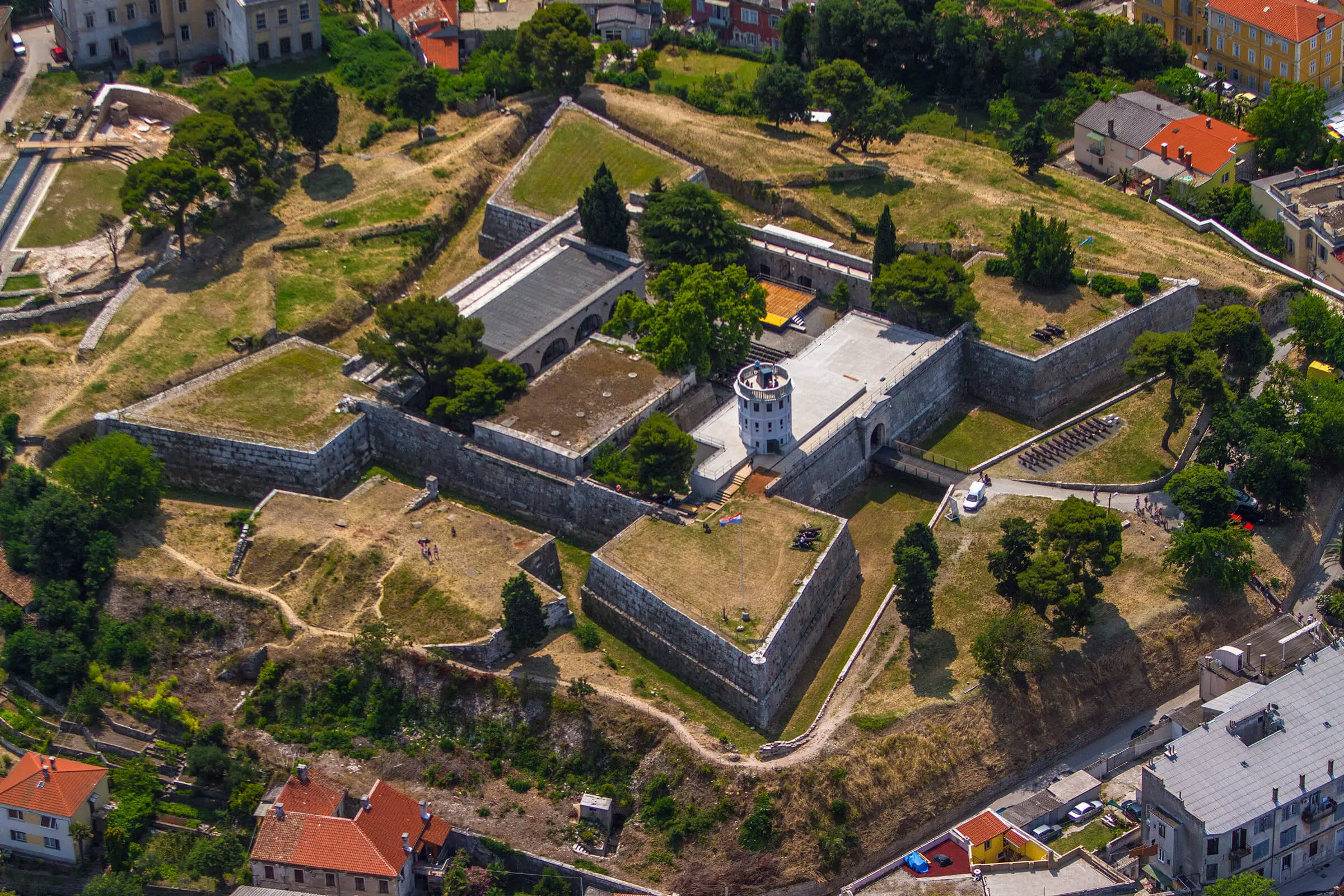
Image: Pula Tourist Board
Trsat Castle
The Trsat Castle served as a lookout on a hill 138 meters above sea level, now overlooking the city of Rijeka. It was mentioned as a parochial center for the first time in 1288. At this same site, there was a Liburnian observation post from prehistoric times, used for monitoring the roads leading from the hinterland to the coast. This location served well for the Romans to establish their defense system, the so-called Liburnian limes, whose starting point was the Tarsatica fortress town, located now in Rijeka’s Old Town.
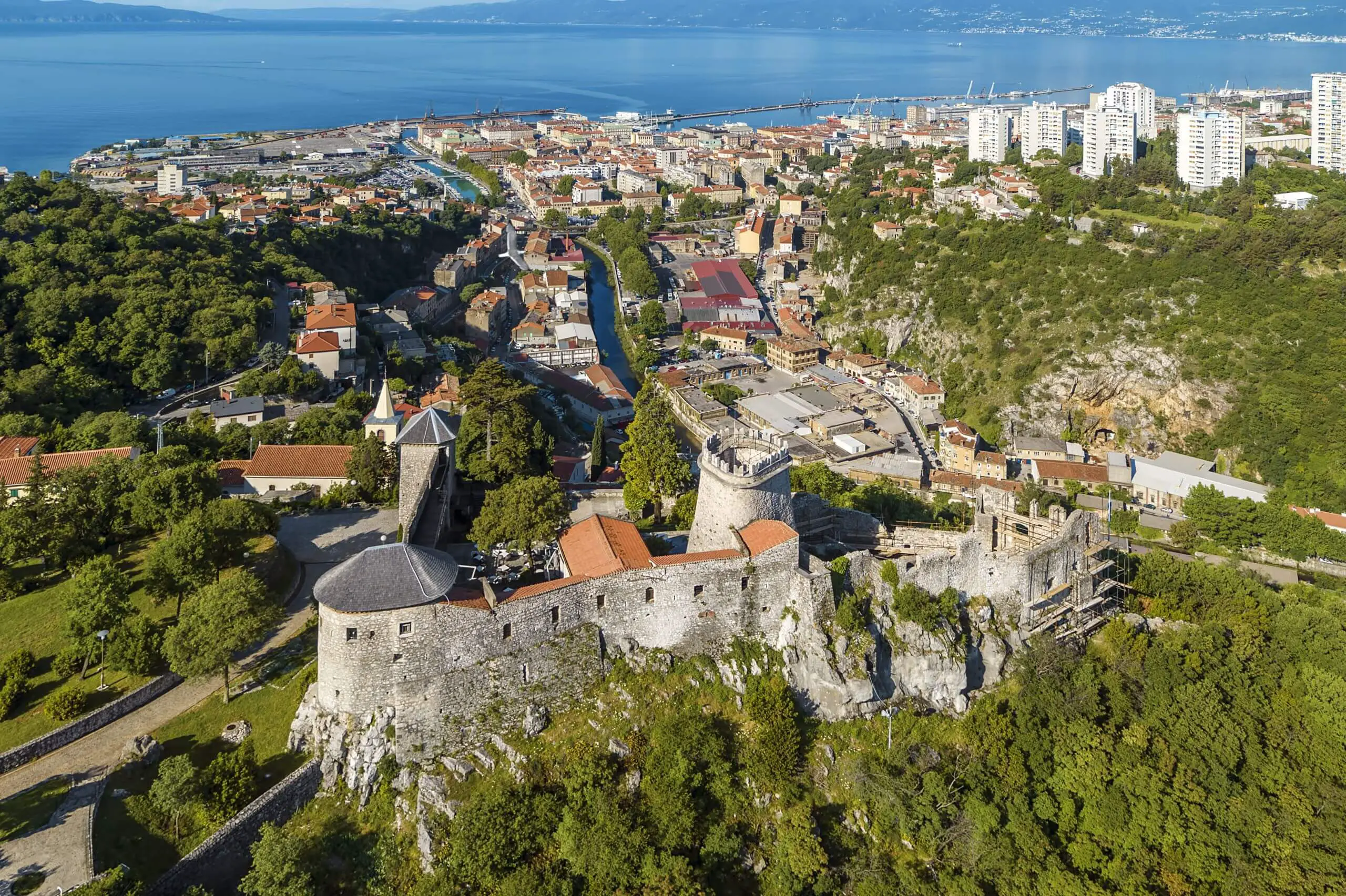
Image: Rijeka Tourist Board
Dubovac Castle in Karlovac
The Dubovac castle is one of the best-preserved and most beautiful monuments of feudal architecture in Croatia. It was built on a hill above the Kupa river and was named after an oak that grows on the surrounding slopes. It changed owners throughout history, changing its appearance depending on current needs and fashion, and got its present appearance after a complete reconstruction in the mid-20th century. It is not known exactly when did construction begin, but books say that it was finished during the 13th century.
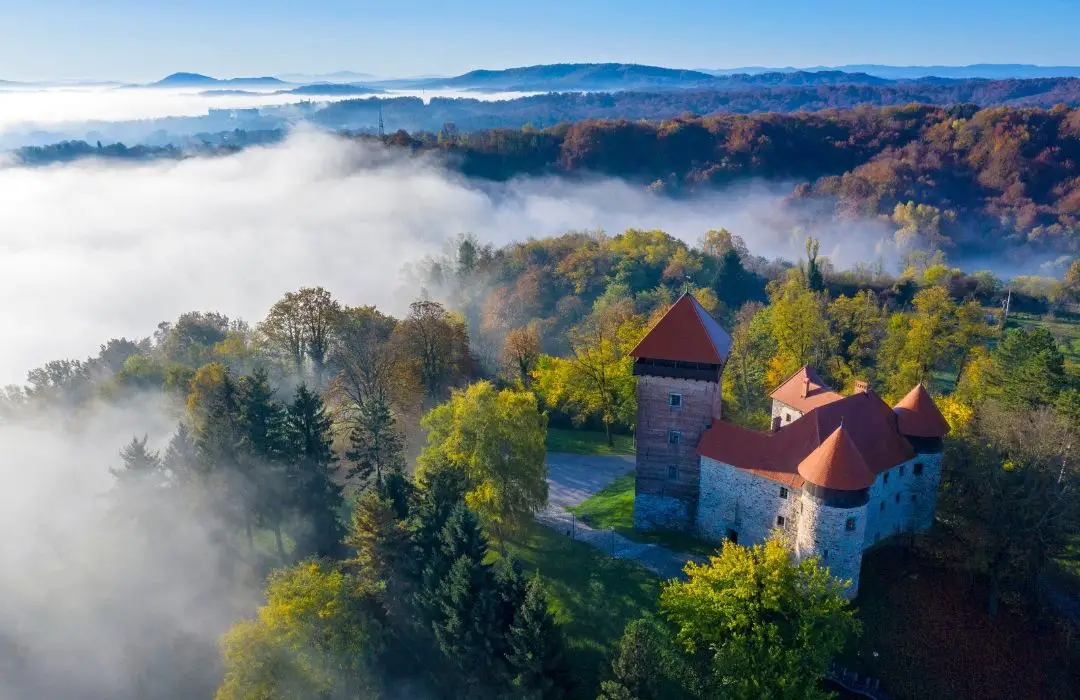
Image: Karlovac Tourist Board
Trakošćan Castle
The Trakošćan castle was built at the end of the 13th century in the defense system of northwestern Croatia as a small observation post to monitor the road from Ptuj to the Bednjan valley. According to the legends, the Trakošćan castle got its name from the Thracian fortress, which allegedly existed in ancient times. Another surviving tradition says that it was named after the Drachenstein knights who ruled the area in the early Middle Ages. A museum with a permanent exhibition was founded in 1954.
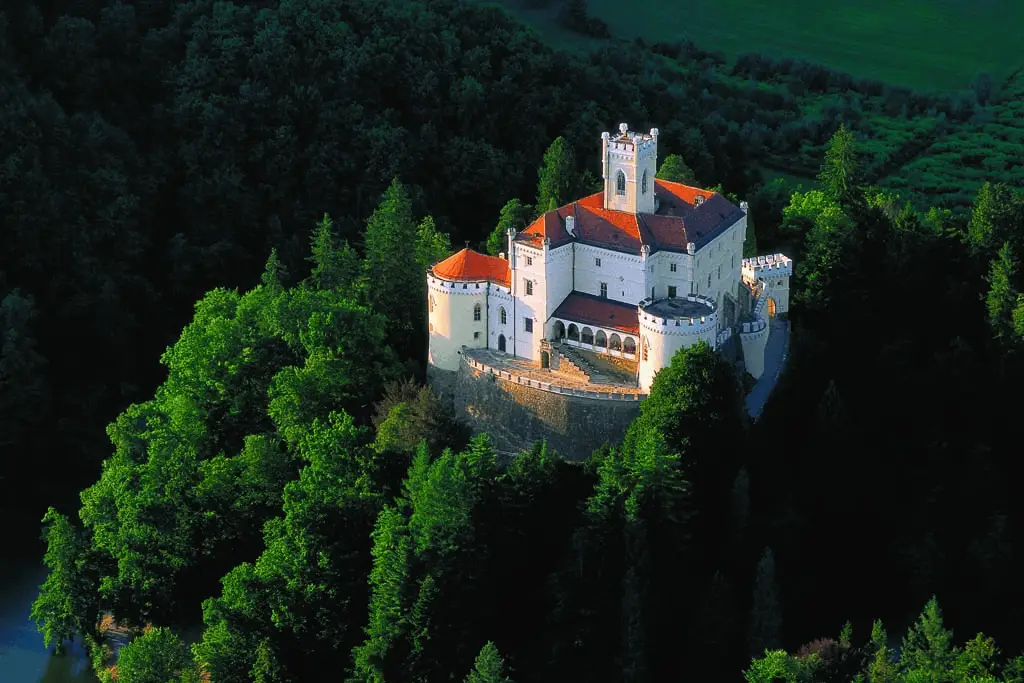
Image: Trakošćan
Varaždin’s Old Town
Varaždin’s feudal fortress, known from ancient times as the Old Town, is undoubtedly the most significant historical building in the city. Unlike the royal free city that grew next to and around it, the fort was the heart of the noble estate, which was separate in terms of ownership and law. Disputes between its inhabitants with the citizens of Varaždin were frequent. The fort was built intermittently from the 14th to the 19th century, and its oldest part is the central tower adorned with Gothic benches and canopies, which is a rarity for this type of medieval plastic art in north Croatia.
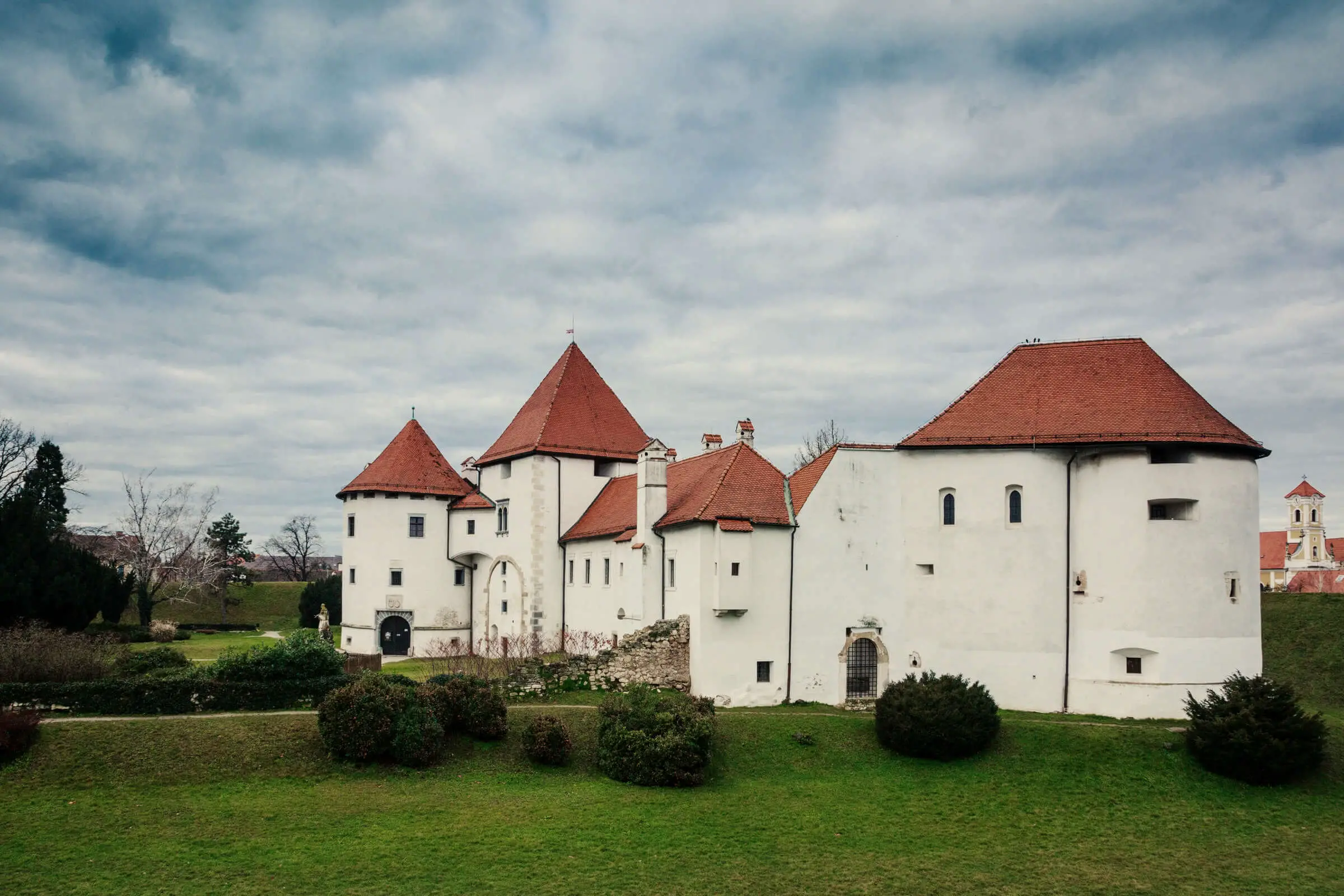
Photo: Mario Romulić
Medvedgrad in Zagreb
At the top of Medvednica, this picturesque medieval castle has been watching over Zagreb for eight centuries. It was built in 1254, after the catastrophic invasion of Tatars who had raided and devastated this area, burning and razing to the ground the two settlements which later became the city of Zagreb: the burgher’s Gradec and the bishop’s Kaptol. Even though magnificently fortified and always ready for battle, Medvedgrad was never attacked. In 2021, Medvedgrad was reopened to the public with a modern and interactive museum inside.
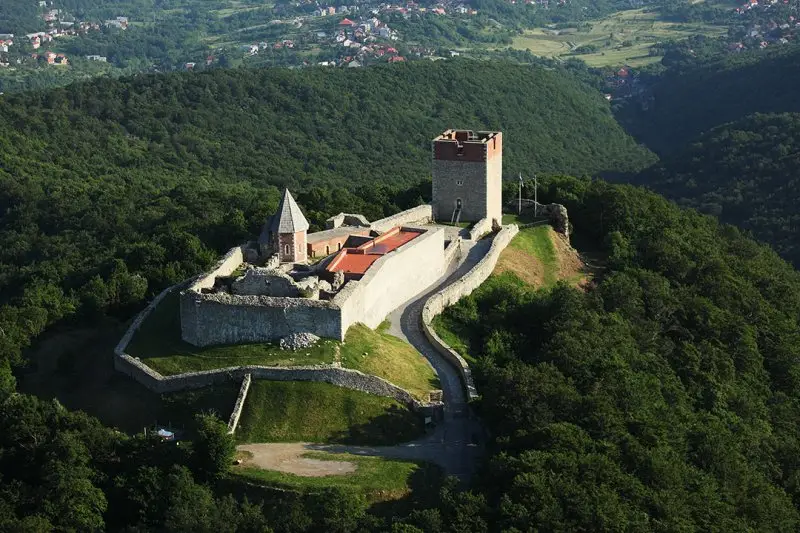
Image: Zagreb Tourist Board
St. Nicholas Fortress in Šibenik
The fortress of St. Nicholas, located at the entrance to the Channel of St. Ante in Šibenik, is a unique Venetian fortification. It was built on the island of Ljuljevac, on the site of the former Benedictine monastery of St. Nicholas, after whom it was named. The construction of the fortress, according to the project of the Venetian architect Gian Girolamo Sanmichelli, began in 1540 after the fall of the city of Skradin under Ottoman rule, when the Venetians had to strengthen the defense of Šibenik, its most important strategic port on the eastern Adriatic coast.

Image: Šibenik Tourist Board
Klis Fortress
Klis fortress was built on an extraordinary strategic location separating the mountains of Mosor and Kozjak that allowed military and commercial control over the whole Klis valley and the area of Salona and Split. Because of its importance, Klis was often referred to as the key to Dalmatia and the heart of the medieval Croatian kingdom. It was built as a small stronghold by the Illyrian tribe Dalmatae, then became a royal castle during feudal and medieval times, and lastly served as a major source of defense against the Ottoman advance.
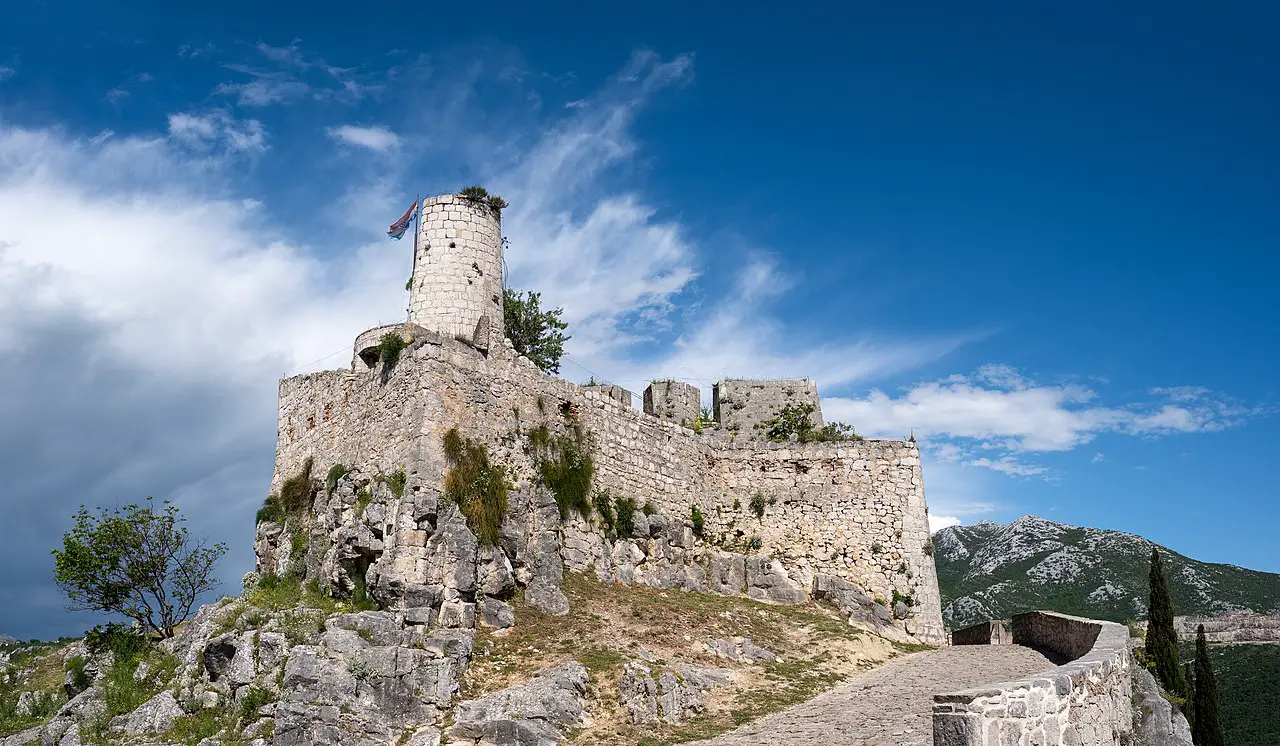
Image: Jules Verne Times Two/Wikimedia Commons
For more on travel in Croatia, follow TCN’s dedicated page.

